 Search by Keyword
|
"HELP!"
(John Lennon / Paul McCartney)
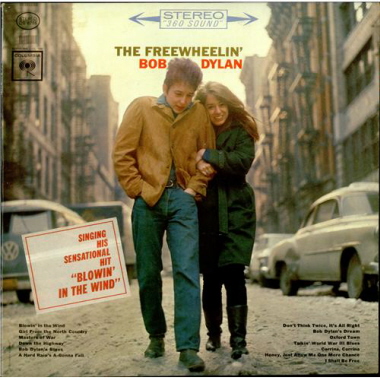 Beatles fans around the world were becoming more aware that Lennon and McCartney were maturing as songwriters right before our eyes. This was especially evident on many of their album tracks, where they dared to delve into sophisticated themes ("If I Fell") and storytelling ("No Reply"). With the inspiration of Bob Dylan as a catalyst, they began to even touch on personal feelings and experiences ("I'm A Loser" and "I Don't Want To Spoil The Party"). Beatles fans around the world were becoming more aware that Lennon and McCartney were maturing as songwriters right before our eyes. This was especially evident on many of their album tracks, where they dared to delve into sophisticated themes ("If I Fell") and storytelling ("No Reply"). With the inspiration of Bob Dylan as a catalyst, they began to even touch on personal feelings and experiences ("I'm A Loser" and "I Don't Want To Spoil The Party").
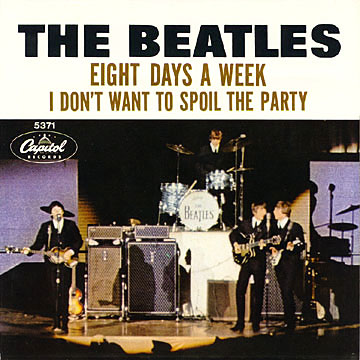 But when it came to writing the hit singles, the songs that would make the biggest impact and reach the most people, they specifically played it safe and fell back to writing standard pop classics about romance. Therefore, as of early 1965, the general population were still treated to Beatles lyrics such as “she’s in love with me and I feel fine” and “I ain’t got nothing but love, babe, eight days a week.” But when it came to writing the hit singles, the songs that would make the biggest impact and reach the most people, they specifically played it safe and fell back to writing standard pop classics about romance. Therefore, as of early 1965, the general population were still treated to Beatles lyrics such as “she’s in love with me and I feel fine” and “I ain’t got nothing but love, babe, eight days a week.”
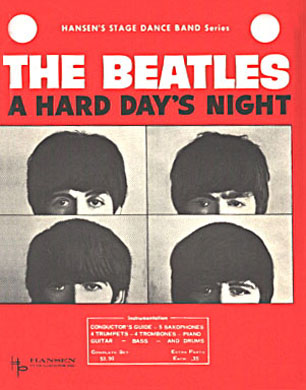 Then came what most critics refer to as The Beatles “middle period.” Writing compelling and personal lyrics coupled with emotional melodies became the rule instead of the exception. For instance, John Lennon knew very well that when he and Paul were asked to write the title song to their second feature film, it would very likely become their next #1 hit single as did "A Hard Day's Night" the year before. Although they were given the title to write a song around, they could very well have written another innocent pop standard the likes of which they could churn out at any given moment. Then came what most critics refer to as The Beatles “middle period.” Writing compelling and personal lyrics coupled with emotional melodies became the rule instead of the exception. For instance, John Lennon knew very well that when he and Paul were asked to write the title song to their second feature film, it would very likely become their next #1 hit single as did "A Hard Day's Night" the year before. Although they were given the title to write a song around, they could very well have written another innocent pop standard the likes of which they could churn out at any given moment.
Instead, John chose to write the most revealing and personal inner feelings he had ever put into a song. With Paul’s assistance, he let the world know what it was like to be John Lennon – Beatle!
Songwriting History
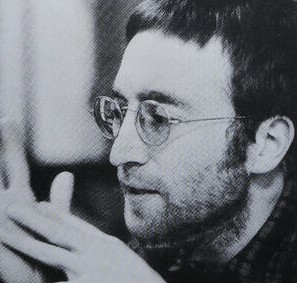 John Lennon could very quickly dismiss music he wrote with The Beatles, but the song “Help!” was one that he was always very proud of. “The only true songs I ever wrote were ‘Help!’ and ‘Strawberry Fields,’” he stated in December of 1970. "They were the ones I really wrote from experience and not projecting myself into a situation and writing a nice story about it, which I always found phoney. The lyric is as good now as it was then. It makes me feel secure to know that I was that sensible, aware of myself back then...That was with no acid, no nothing (well, pot).” John Lennon could very quickly dismiss music he wrote with The Beatles, but the song “Help!” was one that he was always very proud of. “The only true songs I ever wrote were ‘Help!’ and ‘Strawberry Fields,’” he stated in December of 1970. "They were the ones I really wrote from experience and not projecting myself into a situation and writing a nice story about it, which I always found phoney. The lyric is as good now as it was then. It makes me feel secure to know that I was that sensible, aware of myself back then...That was with no acid, no nothing (well, pot).”
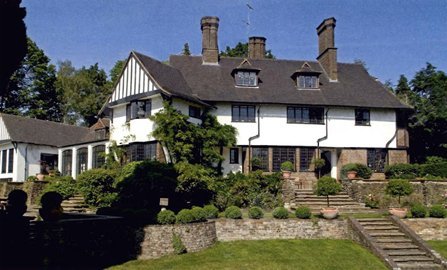 Interestingly, the song actually began to be written well in advance of the movie, which is contrary to popular opinion. “We wrote it in my house (Kenwood),” Lennon stated shortly after the song was released. “I had a little bit of a song, which I’d played around at writing, called something like ‘Keep Your Hands Off My Babe.’ Anyway, it was floating around for a long time and, when Paul came over, we decided to, sort of, adapt it. We wrote ‘Help!’ after we had been told of the film’s title. We never write to fit in with the story line, but this one seemed to fit okay.” Interestingly, the song actually began to be written well in advance of the movie, which is contrary to popular opinion. “We wrote it in my house (Kenwood),” Lennon stated shortly after the song was released. “I had a little bit of a song, which I’d played around at writing, called something like ‘Keep Your Hands Off My Babe.’ Anyway, it was floating around for a long time and, when Paul came over, we decided to, sort of, adapt it. We wrote ‘Help!’ after we had been told of the film’s title. We never write to fit in with the story line, but this one seemed to fit okay.”
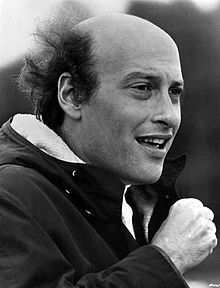 The film’s director, Richard Lester, shares his input in writing the song: “When the second film was being prepared, under the imaginative working title ‘Beatles Two,’ the writers and I wanted to call it ‘Help.’ Unfortunately, we were informed by copyright lawyers that someone else had registered that title. Ringo, helpfully, offered ‘Eight Arms To Hold You’ (relating to the multi-armed statue in the script). Needless to say, there wasn’t a huge amount of enthusiasm to write that song…Another desperate phone call to the lawyers resulted in the question – ‘Does your title have an exclamation mark in it?’ We said, ‘if it helps, we can have one.’ Since the other title didn’t, we were in the clear.” The film’s director, Richard Lester, shares his input in writing the song: “When the second film was being prepared, under the imaginative working title ‘Beatles Two,’ the writers and I wanted to call it ‘Help.’ Unfortunately, we were informed by copyright lawyers that someone else had registered that title. Ringo, helpfully, offered ‘Eight Arms To Hold You’ (relating to the multi-armed statue in the script). Needless to say, there wasn’t a huge amount of enthusiasm to write that song…Another desperate phone call to the lawyers resulted in the question – ‘Does your title have an exclamation mark in it?’ We said, ‘if it helps, we can have one.’ Since the other title didn’t, we were in the clear.”
Lester continues, “That afternoon, John and Paul borrowed the studio piano and started work. By the next morning, they played the finished song to us and recorded it the next night…John, years later, often said that ‘Help!’ was a very personal and emotional song for him. All thanks to an exclamation mark!”
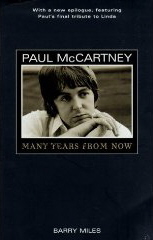 As to who wrote what on the song, Lennon is quick to take full credit. “’Help!’ which I wrote – bam! bam! Like that – and got the single,” he said in 1980. While it definitely is primarily a ‘John song,’ Paul did have a hand in it. In his book “Many Years From Now,” Paul explains: “John went home and thought about it and got the basis of it, then we had a writing session on it. We sat at his house and wrote it, so he obviously didn’t have that much of it. I would have to credit it to John for original inspiration 70-30. My main contribution is the countermelody to John. If you analyze our songs, John’s are often on one note, whereas mine are often much more melodic. I enjoy going places with melodies. I like what John did too, but his are more rhythmic. So to take away from the solo note a little bit I wrote a descant to it.” As to who wrote what on the song, Lennon is quick to take full credit. “’Help!’ which I wrote – bam! bam! Like that – and got the single,” he said in 1980. While it definitely is primarily a ‘John song,’ Paul did have a hand in it. In his book “Many Years From Now,” Paul explains: “John went home and thought about it and got the basis of it, then we had a writing session on it. We sat at his house and wrote it, so he obviously didn’t have that much of it. I would have to credit it to John for original inspiration 70-30. My main contribution is the countermelody to John. If you analyze our songs, John’s are often on one note, whereas mine are often much more melodic. I enjoy going places with melodies. I like what John did too, but his are more rhythmic. So to take away from the solo note a little bit I wrote a descant to it.”
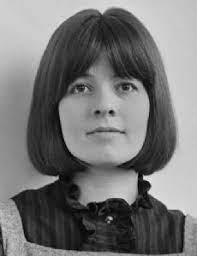 John himself revealed another influence on the writing of the song. “I remember Maureen Cleave – a writer, the one who did the famous ‘Jesus’ story in the ‘Evening Standard’ – said to me, ‘Why don’t you ever write songs with more than one syllable in the words?’ I never considered it before, so after that I put a few three-syllable words in, but she didn’t think much when I played the song for her, anyway. I was insecure then, and things like that happened more than once.” John himself revealed another influence on the writing of the song. “I remember Maureen Cleave – a writer, the one who did the famous ‘Jesus’ story in the ‘Evening Standard’ – said to me, ‘Why don’t you ever write songs with more than one syllable in the words?’ I never considered it before, so after that I put a few three-syllable words in, but she didn’t think much when I played the song for her, anyway. I was insecure then, and things like that happened more than once.”
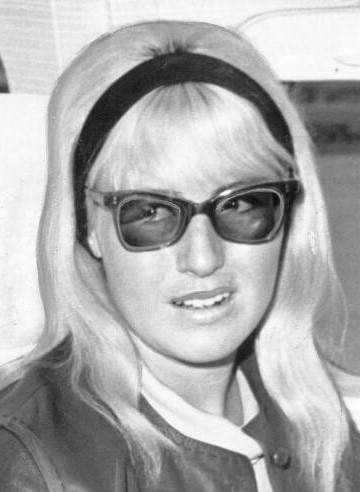 The writing session for the song appears to have occurred on April 11th, which is the date the film’s title was decided on. Paul remembers this writing session at John’s Kenwood home very vividly. Maureen Cleave was actually at Kenwood in the living room with Cynthia Lennon when he and Paul were upstairs writing the song. Paul remembers, “Once we’d done our writing session there was nothing left to be done except put the instruments on. That’s what I was there for; to complete it. Had John just been left on his own he might have taken weeks to do it, but just one visit and we would go right in and complete it. So we came down and played the intro, into the verse, descant coming in on the second verse. It was all crafted, it was all there, the final verses and the end. ‘Very nice,’ they said. ‘Like it.’” The writing session for the song appears to have occurred on April 11th, which is the date the film’s title was decided on. Paul remembers this writing session at John’s Kenwood home very vividly. Maureen Cleave was actually at Kenwood in the living room with Cynthia Lennon when he and Paul were upstairs writing the song. Paul remembers, “Once we’d done our writing session there was nothing left to be done except put the instruments on. That’s what I was there for; to complete it. Had John just been left on his own he might have taken weeks to do it, but just one visit and we would go right in and complete it. So we came down and played the intro, into the verse, descant coming in on the second verse. It was all crafted, it was all there, the final verses and the end. ‘Very nice,’ they said. ‘Like it.’”
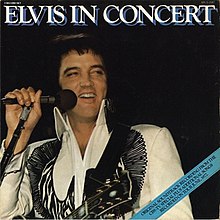 It appears that John is to be credited for the lyrics as a whole, which relate what he was truly going through as the famous Beatle. “I meant it. It’s real! It’s just me singing ‘Help!’ and I meant it…When ‘Help!’ came out, I was crying out for help. Most people think it’s just a fast rock’n’roll song. I didn’t realize it at the time, I just wrote it at the time because I was commissioned to write it for the movie. But later, I knew I really was crying out for help. It was my fat Elvis period. You see the movie, he – I – is very fat, very insecure, and he’s completely lost himself. And I am singing about when I was so much younger and all the rest, looking back at how easy it was. I was fat and I was crying out for help.” It appears that John is to be credited for the lyrics as a whole, which relate what he was truly going through as the famous Beatle. “I meant it. It’s real! It’s just me singing ‘Help!’ and I meant it…When ‘Help!’ came out, I was crying out for help. Most people think it’s just a fast rock’n’roll song. I didn’t realize it at the time, I just wrote it at the time because I was commissioned to write it for the movie. But later, I knew I really was crying out for help. It was my fat Elvis period. You see the movie, he – I – is very fat, very insecure, and he’s completely lost himself. And I am singing about when I was so much younger and all the rest, looking back at how easy it was. I was fat and I was crying out for help.”
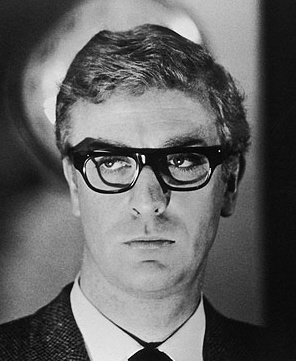 George Harrison adds, “John never said that when he wrote it, he said it retrospectively. That was how he was feeling. He was plump and he had his glasses. He just didn’t feel right. He looked like Michael Caine with horn-rimmed glasses.” George Harrison adds, “John never said that when he wrote it, he said it retrospectively. That was how he was feeling. He was plump and he had his glasses. He just didn’t feel right. He looked like Michael Caine with horn-rimmed glasses.”
Recording History
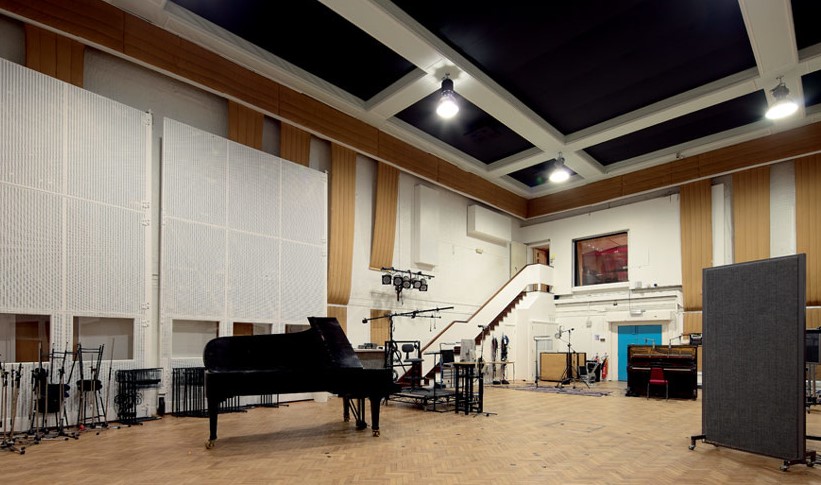 Since, as Paul described above, the full arrangement of the song was nailed down at John’s "Kenwood" house on April 11th, 1965, The Beatles got acquainted with this arrangement by the time they entered EMI Studio Two on April 13th, 1965 at 7 pm for a four hour recording session for their film's title song. Unlike their last recording session on March 30th, 1965 to experiment on improving Paul’s song “That Means A Lot” (which proved to be a futile session), this time around they were on top of their game and got down to business. Since, as Paul described above, the full arrangement of the song was nailed down at John’s "Kenwood" house on April 11th, 1965, The Beatles got acquainted with this arrangement by the time they entered EMI Studio Two on April 13th, 1965 at 7 pm for a four hour recording session for their film's title song. Unlike their last recording session on March 30th, 1965 to experiment on improving Paul’s song “That Means A Lot” (which proved to be a futile session), this time around they were on top of their game and got down to business.
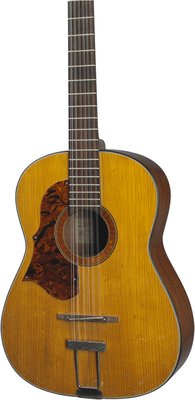 Their sole focus was on getting the rhythm track down first with the intention of adding the vocals as an overdub later. Paul’s bass guitar and Ringo’s drums were fed to one track of the four-track tape while John’s 12-string acoustic guitar and George’s electric guitar were fed to another track, which left two open tracks for later overdubs. "Take one" didn’t get past the introduction because John broke one of the twelve strings on his Framus “Hootenanny” 12-string guitar and yelled out for everyone to stop. (John was the one most prone to break guitar strings as evidenced when listening to the recording takes of many songs – see “Yes It Is” for one example.) Noteworthy on this first take was George’s awkward reading of the jangly-but-distinctive guitar phrase. Their sole focus was on getting the rhythm track down first with the intention of adding the vocals as an overdub later. Paul’s bass guitar and Ringo’s drums were fed to one track of the four-track tape while John’s 12-string acoustic guitar and George’s electric guitar were fed to another track, which left two open tracks for later overdubs. "Take one" didn’t get past the introduction because John broke one of the twelve strings on his Framus “Hootenanny” 12-string guitar and yelled out for everyone to stop. (John was the one most prone to break guitar strings as evidenced when listening to the recording takes of many songs – see “Yes It Is” for one example.) Noteworthy on this first take was George’s awkward reading of the jangly-but-distinctive guitar phrase.
After John’s guitar string was changed, "take two" got just into the first verse before John began struggling with the chord changes, which ended that take. "Take three" got through the chorus and into the beginning of the second verse, but ended when John switched chords too soon at that point in the song.
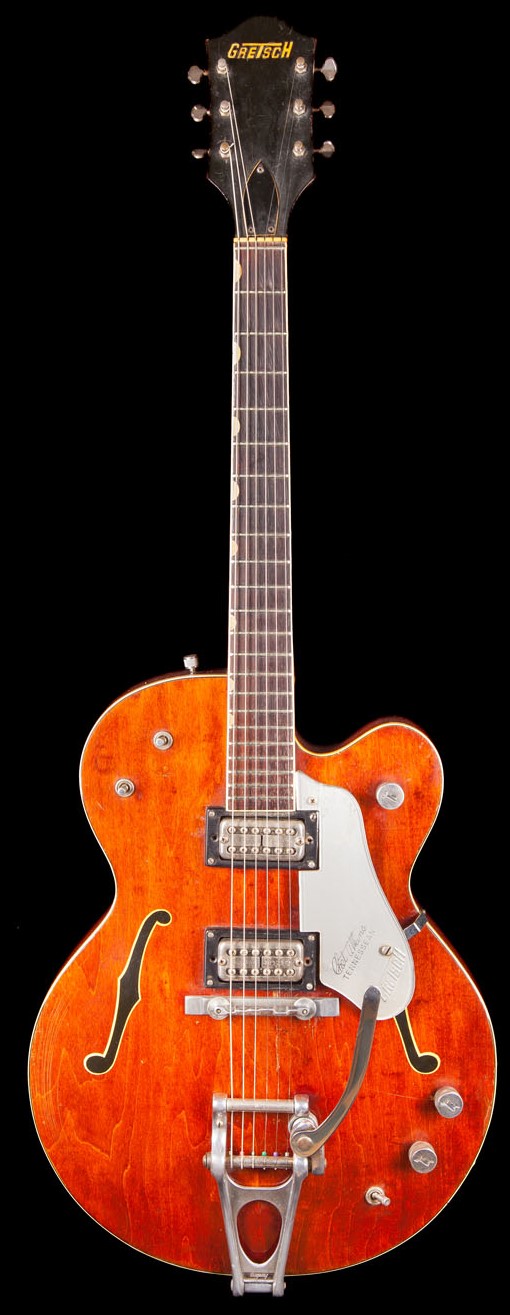 The jangly guitar phrase still proved to be a little much for George to perform live so the group started discussing the possibility of George playing this guitar part as an overdub later. They knew the vocals were also going to be overdubbed later, so they discussed whether there would be enough tracks on the four-track recording console to accommodate it all. In order for George to overdub this guitar phrase as well, Paul suggested that someone should tap out a beat during the rhythm track to keep him in time with the song. John volunteered, saying “Well, I’ll do that,” and demonstrated by tapping on the body of his acoustic guitar. The jangly guitar phrase still proved to be a little much for George to perform live so the group started discussing the possibility of George playing this guitar part as an overdub later. They knew the vocals were also going to be overdubbed later, so they discussed whether there would be enough tracks on the four-track recording console to accommodate it all. In order for George to overdub this guitar phrase as well, Paul suggested that someone should tap out a beat during the rhythm track to keep him in time with the song. John volunteered, saying “Well, I’ll do that,” and demonstrated by tapping on the body of his acoustic guitar.
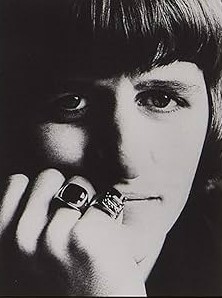 With this settled, they began "take four," which omitted George’s guitar phrase for the time being. Both this and "take five" actually made it all the way through the song, but they felt it could be improved. "Take six" saw John needing to retune his guitar which ground the song to a halt just into the first verse. After his guitar was tuned, "take seven" began which took the song through till the final verse when something, possibly Ringo coming in slightly late at the end of the chorus, made John stop playing. "Take eight" didn’t make it through the introduction because of George having a problem with his guitar. With this settled, they began "take four," which omitted George’s guitar phrase for the time being. Both this and "take five" actually made it all the way through the song, but they felt it could be improved. "Take six" saw John needing to retune his guitar which ground the song to a halt just into the first verse. After his guitar was tuned, "take seven" began which took the song through till the final verse when something, possibly Ringo coming in slightly late at the end of the chorus, made John stop playing. "Take eight" didn’t make it through the introduction because of George having a problem with his guitar.
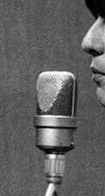 "Take nine," however, became the keeper, although this appears to have been edited with another take, the edit being heard toward the end of the second chorus. Onto this complete rhythm track, overdubbing began. John performed his lead vocals with Paul and George performing background vocals onto one of the two open tracks. John double-tracked his vocals while Ringo overdubbed a tambourine part simultaneously on the choruses on the remaining open track. The only problem was, however, that they had filled up all four tracks on the console and they still had to record George’s guitar phrases in the introduction and choruses of the song. "Take nine," however, became the keeper, although this appears to have been edited with another take, the edit being heard toward the end of the second chorus. Onto this complete rhythm track, overdubbing began. John performed his lead vocals with Paul and George performing background vocals onto one of the two open tracks. John double-tracked his vocals while Ringo overdubbed a tambourine part simultaneously on the choruses on the remaining open track. The only problem was, however, that they had filled up all four tracks on the console and they still had to record George’s guitar phrases in the introduction and choruses of the song.
 George Martin and the EMI staff went into action by performing a procedure that was new to The Beatles at this point but would become very commonplace for them in the very near future. This procedure involved making a tape reduction (or “bouncing”), which entailed copying all four tracks while combining those elements onto fewer tracks on a new tape, thus creating new open tracks for further overdubs. In this case, they positioned the bass and drums of the rhythm track onto track one and the guitars onto track two. They then combined both overdubs, namely all of the vocals and the tambourine, onto track three, allowing one blank track, track four, for George Harrison to record his lead guitar parts. George Martin and the engineering team took three attempts to do this tape reduction: The first attempt ("take ten") made it all the way through but was deemed not good enough, the second try ("take 11") was a false start, and the final attempt ("take 12") was the keeper. George Martin and the EMI staff went into action by performing a procedure that was new to The Beatles at this point but would become very commonplace for them in the very near future. This procedure involved making a tape reduction (or “bouncing”), which entailed copying all four tracks while combining those elements onto fewer tracks on a new tape, thus creating new open tracks for further overdubs. In this case, they positioned the bass and drums of the rhythm track onto track one and the guitars onto track two. They then combined both overdubs, namely all of the vocals and the tambourine, onto track three, allowing one blank track, track four, for George Harrison to record his lead guitar parts. George Martin and the engineering team took three attempts to do this tape reduction: The first attempt ("take ten") made it all the way through but was deemed not good enough, the second try ("take 11") was a false start, and the final attempt ("take 12") was the keeper.
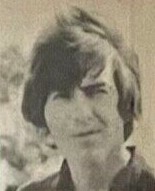 George Harrison then recorded his lead guitar parts onto track four, which consisted of the descending guitar phrases heard throughout the song as well as two three-note descending guitar lines in each chorus. This completed the recording session for the day at 11 pm, the engineering team leaving the mixing for another day. George Harrison then recorded his lead guitar parts onto track four, which consisted of the descending guitar phrases heard throughout the song as well as two three-note descending guitar lines in each chorus. This completed the recording session for the day at 11 pm, the engineering team leaving the mixing for another day.
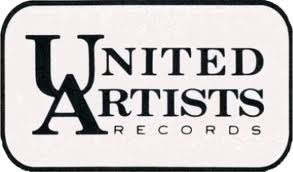 Five days later, on April 18th, 1965, George Martin and engineers Norman Smith and Phil McDonald entered Room 65 at the Abbey Road EMI complex with the intention of creating both the mono and stereo mixes of the song “Help!,” as well as a further stereo mix of the previously recorded song “The Night Before.” One stereo mix and three mono mixes (takes one through three) were made of “Help!,” these being supplied to United Artists for use in the film. It appeared that the song was complete and ready for inclusion on both the film and the released record. Five days later, on April 18th, 1965, George Martin and engineers Norman Smith and Phil McDonald entered Room 65 at the Abbey Road EMI complex with the intention of creating both the mono and stereo mixes of the song “Help!,” as well as a further stereo mix of the previously recorded song “The Night Before.” One stereo mix and three mono mixes (takes one through three) were made of “Help!,” these being supplied to United Artists for use in the film. It appeared that the song was complete and ready for inclusion on both the film and the released record.
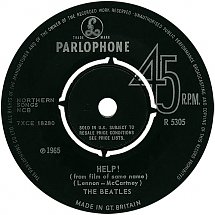 Or was it? As many Beatles enthusiasts will point out, there is a very noticeable difference between the mono and stereo versions of this song as released on record. There are two distinctly different Lennon vocals between the two as well as other subtle differences. What we outlined above is exactly what we hear on the stereo mix, but what about the mono mix? Let’s first take a detailed look at the differences between the mono and stereo mixes and then we’ll look into how, and possibly why, these differences occurred. Or was it? As many Beatles enthusiasts will point out, there is a very noticeable difference between the mono and stereo versions of this song as released on record. There are two distinctly different Lennon vocals between the two as well as other subtle differences. What we outlined above is exactly what we hear on the stereo mix, but what about the mono mix? Let’s first take a detailed look at the differences between the mono and stereo mixes and then we’ll look into how, and possibly why, these differences occurred.
 Mono Mix: First of all, the mono mix has an identical introduction to the stereo mix. However, an edit on this mix occurs right when the first verse begins. This brings in a completely new double-tracked, rougher-sounding Lennon vocal on top of the same instrumental track that we’ve outlined above. Differences in the vocal delivery include the lyrics in the first verse that are delivered as “and now these days have gone” instead of “but now these days have gone” as heard on the stereo mix. Also, the line “now I find I’ve changed my mind” is sung in a manner that is spaced out evenly on the mono mix while it is sped up noticeably on the stereo mix. As for a more subtle difference, the last word of the first verse is “door” in the mono mix while it’s “doors” in the stereo mix. Mono Mix: First of all, the mono mix has an identical introduction to the stereo mix. However, an edit on this mix occurs right when the first verse begins. This brings in a completely new double-tracked, rougher-sounding Lennon vocal on top of the same instrumental track that we’ve outlined above. Differences in the vocal delivery include the lyrics in the first verse that are delivered as “and now these days have gone” instead of “but now these days have gone” as heard on the stereo mix. Also, the line “now I find I’ve changed my mind” is sung in a manner that is spaced out evenly on the mono mix while it is sped up noticeably on the stereo mix. As for a more subtle difference, the last word of the first verse is “door” in the mono mix while it’s “doors” in the stereo mix.
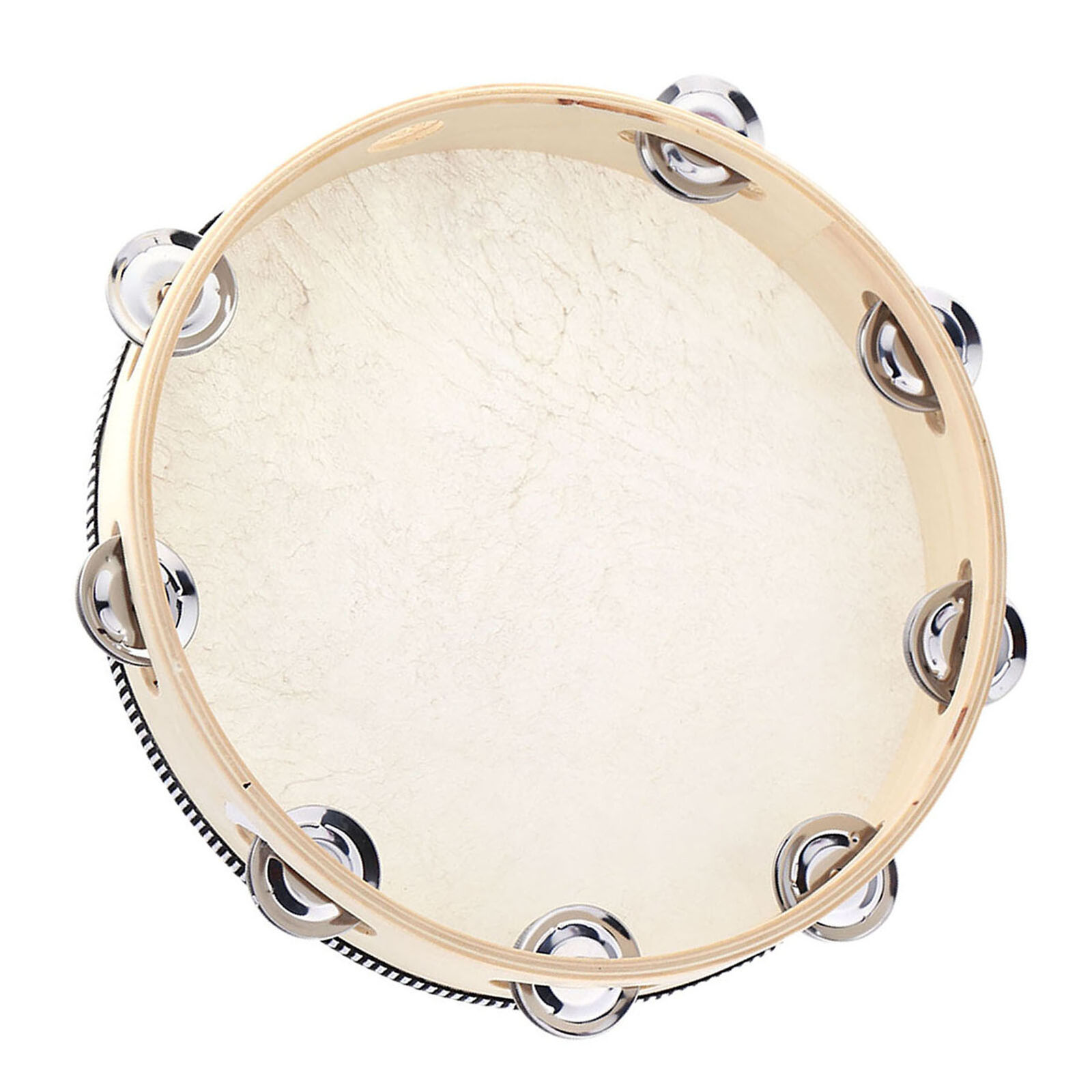 As we go into the first chorus, we notice the absence of the tambourine as heard in the stereo mix in addition to different lead vocals. An abrupt edit is heard right as George’s jangly guitar phrase begins (heard as “won’t you (edit) please…”), which cuts out Ringo’s cymbal crash and John’s thumping on his acoustic guitar as performed on the rhythm track. Another edit is heard after George’s guitar phrase ends (“…please help (edit) me”) to bring the rhythm instruments back in. In fact, this same edit sequence is heard in all three choruses of the song. We also notice the absence of the tambourine hits on the one-beat of each measure in the second half of the third verse. And, in the song's conclusion, John doesn’t sing the first “help” with Paul and George; instead he just comes in on the word “me” to give a back-and-forth effect. (This effect is emphasized in the film footage of the movie as well.) As we go into the first chorus, we notice the absence of the tambourine as heard in the stereo mix in addition to different lead vocals. An abrupt edit is heard right as George’s jangly guitar phrase begins (heard as “won’t you (edit) please…”), which cuts out Ringo’s cymbal crash and John’s thumping on his acoustic guitar as performed on the rhythm track. Another edit is heard after George’s guitar phrase ends (“…please help (edit) me”) to bring the rhythm instruments back in. In fact, this same edit sequence is heard in all three choruses of the song. We also notice the absence of the tambourine hits on the one-beat of each measure in the second half of the third verse. And, in the song's conclusion, John doesn’t sing the first “help” with Paul and George; instead he just comes in on the word “me” to give a back-and-forth effect. (This effect is emphasized in the film footage of the movie as well.)
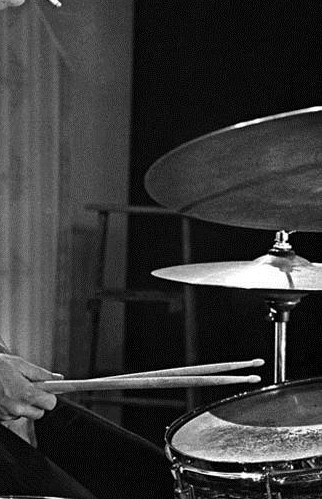 Stereo Mix: In the stereo mix, each chorus contains the tambourine as well as the unedited ending during George’s guitar phrases, allowing us to hear John’s acoustic guitar thumping and Ringo’s cymbals ringing out. Apart from the lyrical and emphasis differences mentioned above, the vocal performances are nearly identical but are obviously a different performance. Paul and George’s background vocals are a little more off-pitch in this mix, but Ringo’s tambourine accents in the final verse are very much evident. Stereo Mix: In the stereo mix, each chorus contains the tambourine as well as the unedited ending during George’s guitar phrases, allowing us to hear John’s acoustic guitar thumping and Ringo’s cymbals ringing out. Apart from the lyrical and emphasis differences mentioned above, the vocal performances are nearly identical but are obviously a different performance. Paul and George’s background vocals are a little more off-pitch in this mix, but Ringo’s tambourine accents in the final verse are very much evident.
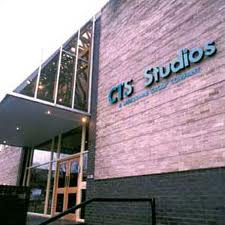 How The Mono Mix Was Done: There was one further recording session that took place to prepare the song for inclusion in the movie. This occurred on May 24th, 1965, not at EMI Studios, but at CTS Studios in London, a facility specializing in post-synchronization. The mixes supplied by George Martin were deemed unusable for some reason, possibly because they featured a tambourine overdub while the filmed opening sequence for the movie shows The Beatles performing the song without a tambourine being played. Since the tambourine was combined with the vocals on the master tape, an entirely new vocal track needed to be recorded. How The Mono Mix Was Done: There was one further recording session that took place to prepare the song for inclusion in the movie. This occurred on May 24th, 1965, not at EMI Studios, but at CTS Studios in London, a facility specializing in post-synchronization. The mixes supplied by George Martin were deemed unusable for some reason, possibly because they featured a tambourine overdub while the filmed opening sequence for the movie shows The Beatles performing the song without a tambourine being played. Since the tambourine was combined with the vocals on the master tape, an entirely new vocal track needed to be recorded.
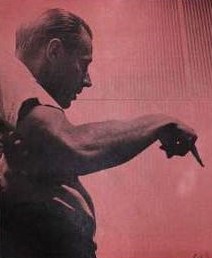 In preparation for this recording session, George Martin created a new mix of the song sometime prior to May 24th, 1965, probably on a twin-track reel, omitting the vocal track and, presumably, editing out (or muting) the tracks that contained Ringo’s cymbal crash and John’s guitar thumping during the conclusion of each chorus. Then at CTS Studios, this mono instrumental track was transferred to one track of a new three-track reel (which is what CTS had capabilities for) leaving two open tracks for new vocal overdubs. John, Paul and George then re-recorded their vocal performance for the song on one of the open tracks, John unintentionally changing a word here and there in the process. This was then followed by John double-tracking his lead vocals onto the third open track. Therefore, with the tambourine successfully removed from the song, these tracks were then mono mixed and readied for inclusion on the movie. In preparation for this recording session, George Martin created a new mix of the song sometime prior to May 24th, 1965, probably on a twin-track reel, omitting the vocal track and, presumably, editing out (or muting) the tracks that contained Ringo’s cymbal crash and John’s guitar thumping during the conclusion of each chorus. Then at CTS Studios, this mono instrumental track was transferred to one track of a new three-track reel (which is what CTS had capabilities for) leaving two open tracks for new vocal overdubs. John, Paul and George then re-recorded their vocal performance for the song on one of the open tracks, John unintentionally changing a word here and there in the process. This was then followed by John double-tracking his lead vocals onto the third open track. Therefore, with the tambourine successfully removed from the song, these tracks were then mono mixed and readied for inclusion on the movie.
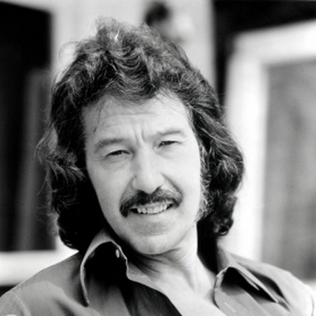 Now, back to EMI Studios. On June 18th, 1965, George Martin, with Norman Smith and Phil McDonald as engineers once again, entered the control room of EMI Studio Two to create mono mixes of songs intended to appear on the “Help!” album, including its title track. He decided to utilize the CTS mono mix of the song for its release on record with one alteration. He decided to use the originally recorded introduction to the song, vocals and all, as originally recorded in EMI Studios on April 13th, 1965. He did, however, omit John’s vocal double-tracking, apparently feeling it wasn’t delivered acceptably. When the first verse appears, the CTS mono mix is edited on, which is what we then hear for the remainder of the song. Now, back to EMI Studios. On June 18th, 1965, George Martin, with Norman Smith and Phil McDonald as engineers once again, entered the control room of EMI Studio Two to create mono mixes of songs intended to appear on the “Help!” album, including its title track. He decided to utilize the CTS mono mix of the song for its release on record with one alteration. He decided to use the originally recorded introduction to the song, vocals and all, as originally recorded in EMI Studios on April 13th, 1965. He did, however, omit John’s vocal double-tracking, apparently feeling it wasn’t delivered acceptably. When the first verse appears, the CTS mono mix is edited on, which is what we then hear for the remainder of the song.
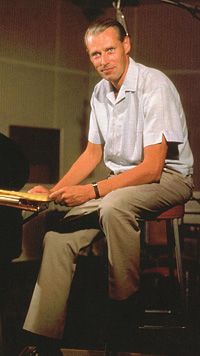 The stereo mix of “Help!,” as well as other songs intended for the album, was also created by the same engineering team during the second session on this day. Since the mix supplied from CTS was only made available to EMI in mono, George Martin had to prepare the stereo mix from the original master, tambourine and all. Hence the major differences between the released mono and stereo mixes of the song. George Martin once again decided to omit John’s vocal double-tracking in the introduction as he had on the mono mix. The stereo landscape has the rhythm track on the left, the lead guitar overdubs on the right, and the vocals centered. The stereo mix of “Help!,” as well as other songs intended for the album, was also created by the same engineering team during the second session on this day. Since the mix supplied from CTS was only made available to EMI in mono, George Martin had to prepare the stereo mix from the original master, tambourine and all. Hence the major differences between the released mono and stereo mixes of the song. George Martin once again decided to omit John’s vocal double-tracking in the introduction as he had on the mono mix. The stereo landscape has the rhythm track on the left, the lead guitar overdubs on the right, and the vocals centered.
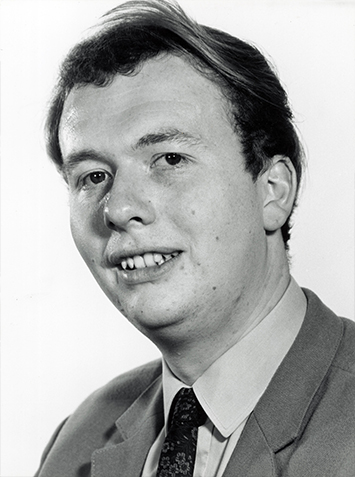 Brand new versions of the song were also recorded later that year, but in the form of live performances. On August 29th and 30th, recordings were made of their shows at the Hollywood Bowl in Los Angeles, California, onto a three-track recording machine in hopes of releasing a live album around that time. The August 29th recording was produced by Karl Engemann and engineered by Hugh Davies, while the August 30th show was produced by Capitol vice-president Voyle Gilmore and engineered by Pete Abbott. The live album didn't materialize in the 60's, but on January 18th, 1977, George Martin and engineer Geoff Emerick were given the master tapes of these shows in order to prepare the album “The Beatles At The Hollywood Bowl,” which was released later that year. The August 29th performance of the song was deemed the better performance of the two, the project being completed by January 23rd, 1977. Brand new versions of the song were also recorded later that year, but in the form of live performances. On August 29th and 30th, recordings were made of their shows at the Hollywood Bowl in Los Angeles, California, onto a three-track recording machine in hopes of releasing a live album around that time. The August 29th recording was produced by Karl Engemann and engineered by Hugh Davies, while the August 30th show was produced by Capitol vice-president Voyle Gilmore and engineered by Pete Abbott. The live album didn't materialize in the 60's, but on January 18th, 1977, George Martin and engineer Geoff Emerick were given the master tapes of these shows in order to prepare the album “The Beatles At The Hollywood Bowl,” which was released later that year. The August 29th performance of the song was deemed the better performance of the two, the project being completed by January 23rd, 1977.
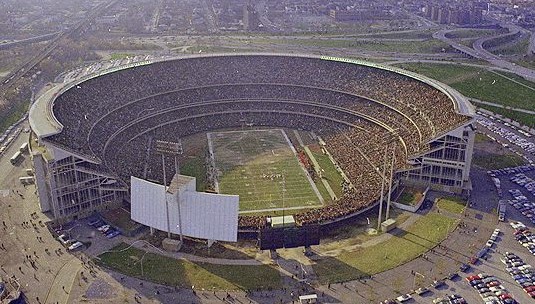 January 5th, 1966 saw The Beatles record the song one more time at CTS Studios, but this time for a totally different purpose. Their legendary August 15th, 1965 show at Shea Stadium in New York City was being prepared for a television film entitled “The Beatles At Shea Stadium.” Because the sound quality was less than desired, The Beatles were called in on this day to touch up the songs. “Help!” needed a complete overhaul, so they recorded a completely new version of the song live in the studio to be dubbed onto the film footage of the concert. Extreme care needed to be taken to make sure their playing and singing matched the footage, but The Beatles proved to be up to the task. January 5th, 1966 saw The Beatles record the song one more time at CTS Studios, but this time for a totally different purpose. Their legendary August 15th, 1965 show at Shea Stadium in New York City was being prepared for a television film entitled “The Beatles At Shea Stadium.” Because the sound quality was less than desired, The Beatles were called in on this day to touch up the songs. “Help!” needed a complete overhaul, so they recorded a completely new version of the song live in the studio to be dubbed onto the film footage of the concert. Extreme care needed to be taken to make sure their playing and singing matched the footage, but The Beatles proved to be up to the task.
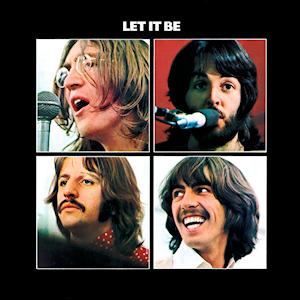 On January 23rd, 1969, The Beatles touched on the song briefly once again in a recording studio. This, though, was just an unrehearsed jam of the first verse (or so) they did while film crews were shooting footage at Apple Studios. This playful rendition was recorded during rehearsals for the song “Get Back” for the “Get Back / Let It Be” project that year, this humorous footage being restored and included in Peter Jackson's "Get Back" series in 2021. On January 23rd, 1969, The Beatles touched on the song briefly once again in a recording studio. This, though, was just an unrehearsed jam of the first verse (or so) they did while film crews were shooting footage at Apple Studios. This playful rendition was recorded during rehearsals for the song “Get Back” for the “Get Back / Let It Be” project that year, this humorous footage being restored and included in Peter Jackson's "Get Back" series in 2021.
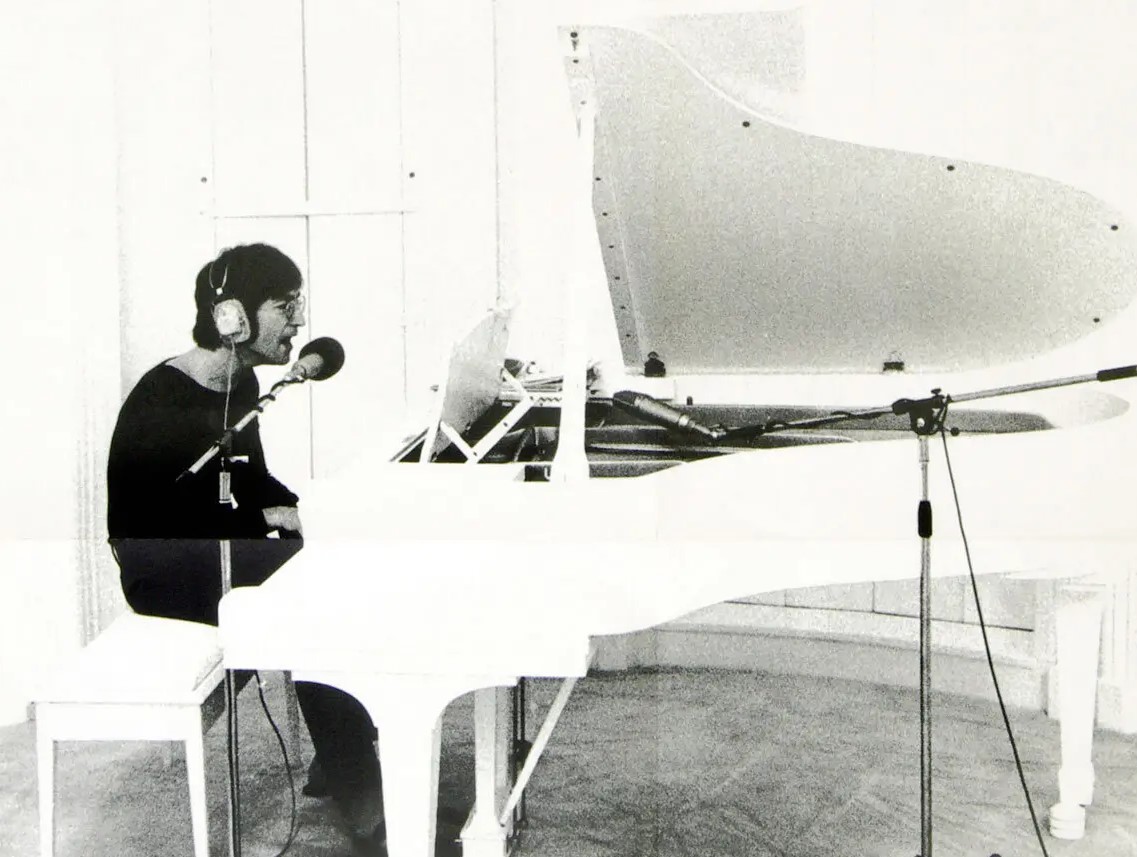 “I don’t like the recording that much,” John stated in 1970. He continued, “The real feeling of the song was lost because it was a single; we did it too fast, to try and be commercial. I’ve thought of doing it again sometime and slowing it down.” Sometime after he had made this comment, possibly in 1970, he actually tried his hand at recording a new version of “Help!” on piano, but at a much slower pace. Apart from bootlegs, it has never seen the light of day. “I don’t like the recording that much,” John stated in 1970. He continued, “The real feeling of the song was lost because it was a single; we did it too fast, to try and be commercial. I’ve thought of doing it again sometime and slowing it down.” Sometime after he had made this comment, possibly in 1970, he actually tried his hand at recording a new version of “Help!” on piano, but at a much slower pace. Apart from bootlegs, it has never seen the light of day.
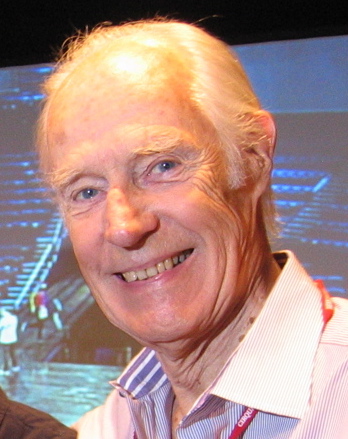 When the compact disc era arrived in the '80s, George Martin felt inclined to create new stereo mixes for the entire “Help!” album. He and engineer Geoff Emerick entered Abbey Road Studios (formerly EMI Studios) sometime in 1985 to create a new stereo mix for the title song with basically the same stereo landscape but with less drastic panning. When the compact disc era arrived in the '80s, George Martin felt inclined to create new stereo mixes for the entire “Help!” album. He and engineer Geoff Emerick entered Abbey Road Studios (formerly EMI Studios) sometime in 1985 to create a new stereo mix for the title song with basically the same stereo landscape but with less drastic panning.
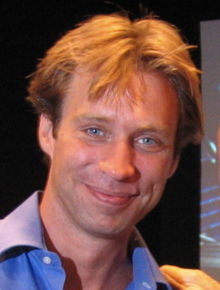 Sometime between 2004 and 2006, Giles Martin and his father George created a further stereo mix of the song for release on the amazing album “Love,” which was used as a backdrop to the popular Cirque du Soleil show of the same name. The differences here include a somewhat extended final vocal harmony at the end as well as slight changes in the stereo landscape, George’s lead guitar work now taking center stage. Sometime between 2004 and 2006, Giles Martin and his father George created a further stereo mix of the song for release on the amazing album “Love,” which was used as a backdrop to the popular Cirque du Soleil show of the same name. The differences here include a somewhat extended final vocal harmony at the end as well as slight changes in the stereo landscape, George’s lead guitar work now taking center stage.
 Then in 2015, Giles Martin and Sam Okell created yet another stereo mix in Abbey Road Studios from the master tape for inclusion on a re-release of the compilation album "Beatles 1." Then again in 2023, Giles Martin was given the task of creating a "demix remix" of "Help!" for inclusion on the 50th Anniversary edition of the compilation album "The Beatles / 1962 - 1966" (aka "The Red Album"). With Peter Jackson's AI technology at his disposal, Giles Martin was able to utilize this "new machine-learning techology" so that "individual elements that were put to tape...and were therefore impossible to separate" could be "untangled, allowing Giles (Martin) to put the original recordings back together with even greater clarity and impact," as stated by John Harris in the liner notes of the above mentioned album. The vibrancy and clarity of this mix arguably makes this the best stereo mix of the song yet. Then in 2015, Giles Martin and Sam Okell created yet another stereo mix in Abbey Road Studios from the master tape for inclusion on a re-release of the compilation album "Beatles 1." Then again in 2023, Giles Martin was given the task of creating a "demix remix" of "Help!" for inclusion on the 50th Anniversary edition of the compilation album "The Beatles / 1962 - 1966" (aka "The Red Album"). With Peter Jackson's AI technology at his disposal, Giles Martin was able to utilize this "new machine-learning techology" so that "individual elements that were put to tape...and were therefore impossible to separate" could be "untangled, allowing Giles (Martin) to put the original recordings back together with even greater clarity and impact," as stated by John Harris in the liner notes of the above mentioned album. The vibrancy and clarity of this mix arguably makes this the best stereo mix of the song yet.
Song Structure and Style
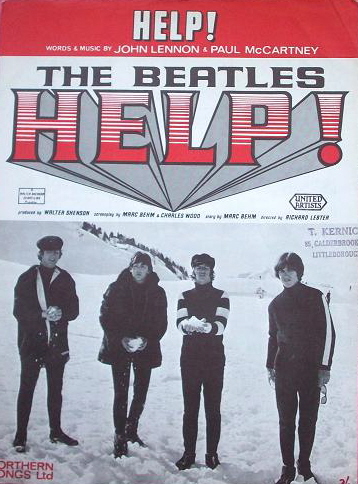 “It’s quite involved,” said George Harrison back in 1965 about the song “Help!” He continues, “A bit more involved than the others we’ve done because it has a counter-melody going as well as the main melody. I think it’s a grower, because it’s the sort of song people will have to hear a few times before they realize what it’s all about. It’s a bit like ‘It Won’t Be Long.’ That’s the only one it is anything like.” “It’s quite involved,” said George Harrison back in 1965 about the song “Help!” He continues, “A bit more involved than the others we’ve done because it has a counter-melody going as well as the main melody. I think it’s a grower, because it’s the sort of song people will have to hear a few times before they realize what it’s all about. It’s a bit like ‘It Won’t Be Long.’ That’s the only one it is anything like.”
From this comment it’s pretty clear that The Beatles were enthused about the song. "We think it's one of the best we've written," John stated in 1965. Paul even commented at the time, “I think it’s a good song. I don’t think it’s being bigheaded saying it’s a good song, but I just like it, we all like it.” With a song that pushes the envelope in content as well as structure, The Beatles had good reason to give themselves a deserved pat on the back for this one.
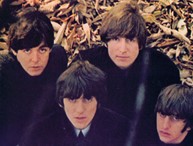 We’re beginning to see the group move a little further away from their usual aaba structure with a bridge, which was so common in their early years. In this case, we see them getting more acquainted with the use of the chorus (or some would say “refrain”). In “Help!” we have a ‘verse/ chorus/ verse/ chorus/ verse/ chorus’ format (or ababab) with an introduction and conclusion thrown in for good effect. We’re beginning to see the group move a little further away from their usual aaba structure with a bridge, which was so common in their early years. In this case, we see them getting more acquainted with the use of the chorus (or some would say “refrain”). In “Help!” we have a ‘verse/ chorus/ verse/ chorus/ verse/ chorus’ format (or ababab) with an introduction and conclusion thrown in for good effect.
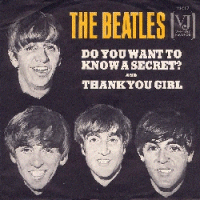 The use of an introduction not heard elsewhere in the song occurs sporadically throughout the Lennon / McCartney songbook, an early example being “Do You Want To Know A Secret.” Obviously, the comparison stops there. This eight-measure introduction starts suddenly and urgently on the one-beat with a desperate three-part-harmony cry of “Help!” with all instruments flailing away at full volume. The use of an introduction not heard elsewhere in the song occurs sporadically throughout the Lennon / McCartney songbook, an early example being “Do You Want To Know A Secret.” Obviously, the comparison stops there. This eight-measure introduction starts suddenly and urgently on the one-beat with a desperate three-part-harmony cry of “Help!” with all instruments flailing away at full volume.
 Although the intro mimics the chord changes of the chorus which we’ll hear later, beginning the song with this chord progression leaves the first-time listener trying to get his bearings. It’s almost impossible to predict where we’re going - that is to say, where the home key of the song is. Propelled by Paul’s staccato bass quarter-notes, we finally arrive there with the fourth repeat of the title of the song, which is sung in a desperate falsetto that triggers a "Beatles break" and the clever descending guitar phrase from George Harrison while Ringo’s crash cymbal rings out. Now that The Beatles definitely have the attention of all listeners, who are no doubt fumbling to dial 911, the tension subsides to begin the first verse so that John can fill us in as to what the problem is. Although the intro mimics the chord changes of the chorus which we’ll hear later, beginning the song with this chord progression leaves the first-time listener trying to get his bearings. It’s almost impossible to predict where we’re going - that is to say, where the home key of the song is. Propelled by Paul’s staccato bass quarter-notes, we finally arrive there with the fourth repeat of the title of the song, which is sung in a desperate falsetto that triggers a "Beatles break" and the clever descending guitar phrase from George Harrison while Ringo’s crash cymbal rings out. Now that The Beatles definitely have the attention of all listeners, who are no doubt fumbling to dial 911, the tension subsides to begin the first verse so that John can fill us in as to what the problem is.
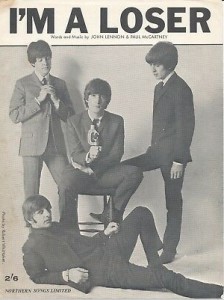 After a quick tom-tom drum roll from Ringo, John tells his sad story via a folk-style swing beat not unlike he regaled us with on “I’m A Loser” the year before. George sits out the verses instrumentally but his presence is felt in the background vocals which, with Paul, alternate between previewing what John is just about to tell us and repeating what he just said. This sixteen-measure verse actually consists of a pair of identical eight-measure phrases that feature Paul’s half-note “oom-pah” bass work. Interestingly, Ringo ends the verse with a straight 4/4 drum fill simultaneously on his snare and floor tom, which contrasts nicely with the swing beat of the song. After a quick tom-tom drum roll from Ringo, John tells his sad story via a folk-style swing beat not unlike he regaled us with on “I’m A Loser” the year before. George sits out the verses instrumentally but his presence is felt in the background vocals which, with Paul, alternate between previewing what John is just about to tell us and repeating what he just said. This sixteen-measure verse actually consists of a pair of identical eight-measure phrases that feature Paul’s half-note “oom-pah” bass work. Interestingly, Ringo ends the verse with a straight 4/4 drum fill simultaneously on his snare and floor tom, which contrasts nicely with the swing beat of the song.
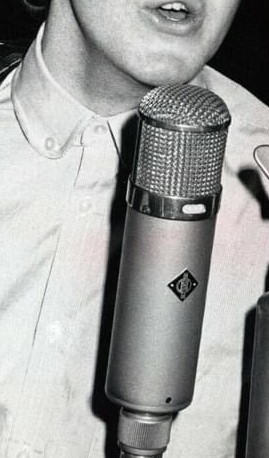 The first sixteen-measure chorus then appears, which features John’s insistent pleas for help. George provides rhythm guitar chops on the two and four beat of each measure along with overdubbed lower note guitar phrases which are simple but very effective. John sings solo but double-tracked for the first eight measures and then is joined by Paul and George for three part harmony for the third line “help me get my feet back on the ground.” The thirteenth and fourteenth measure comprise another "Beatles break" that features George’s clever descending guitar phrase as a backdrop to the key line of the song, “won’t you pleeease, please help me” sung in falsetto by John and harmonized by Paul and George. The chorus is actually a stretched out version of what we’ve already heard in the eight-measure introduction. The first sixteen-measure chorus then appears, which features John’s insistent pleas for help. George provides rhythm guitar chops on the two and four beat of each measure along with overdubbed lower note guitar phrases which are simple but very effective. John sings solo but double-tracked for the first eight measures and then is joined by Paul and George for three part harmony for the third line “help me get my feet back on the ground.” The thirteenth and fourteenth measure comprise another "Beatles break" that features George’s clever descending guitar phrase as a backdrop to the key line of the song, “won’t you pleeease, please help me” sung in falsetto by John and harmonized by Paul and George. The chorus is actually a stretched out version of what we’ve already heard in the eight-measure introduction.
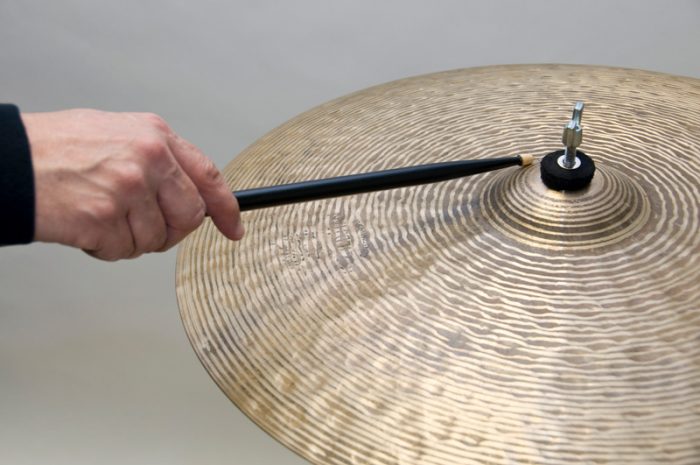 After another structurally identical verse and a repeat of the chorus, we round things off with a return to the first verse. This time, though, the first eight measures are sung in more hushed tones mimicking the acoustic singer/songwriter style. Ringo only plays on the bells of his cymbals while Paul only plucks the key bass notes on the one-beat of every other measure. The second half of this verse resumes the roles of the other Beatles as heard the first time around. After another structurally identical verse and a repeat of the chorus, we round things off with a return to the first verse. This time, though, the first eight measures are sung in more hushed tones mimicking the acoustic singer/songwriter style. Ringo only plays on the bells of his cymbals while Paul only plucks the key bass notes on the one-beat of every other measure. The second half of this verse resumes the roles of the other Beatles as heard the first time around.
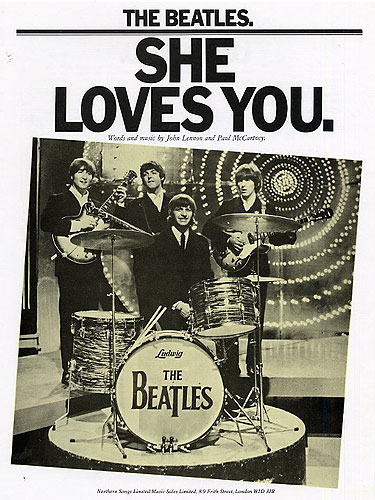 Thereafter, the chorus is belted out for the third time but ends in a somewhat surprising way. The last two measures are chopped off (which make it only fourteen measures long) and replaced by a satisfying four measure conclusion. John vehemently emphasizes the last word of the chorus three times, which happens to be the word “me.” In-between the first two occurrences, Paul and George interject harmonized “help”s while the band cuts out totally at the beginning of the third measure on the home key of A. The harmonized falsettos continue the song past this measure with the words “meeee-oohmmmm.” The rising last note changes the final A chord to an added sixth, which is a similar trick to what we’ve heard two years earlier on “She Loves You” but with a more subtle effect. Thereafter, the chorus is belted out for the third time but ends in a somewhat surprising way. The last two measures are chopped off (which make it only fourteen measures long) and replaced by a satisfying four measure conclusion. John vehemently emphasizes the last word of the chorus three times, which happens to be the word “me.” In-between the first two occurrences, Paul and George interject harmonized “help”s while the band cuts out totally at the beginning of the third measure on the home key of A. The harmonized falsettos continue the song past this measure with the words “meeee-oohmmmm.” The rising last note changes the final A chord to an added sixth, which is a similar trick to what we’ve heard two years earlier on “She Loves You” but with a more subtle effect.
“I remember I got very emotional at the time, singing the lyrics,” John stated about the song “Help!” in 1970. “Whatever I’m singing, I really mean it. I don’t mess about. Even if I’m singing ‘awop-bop-alooma-awop-bam-boom,’ I really mean it. And then there’s always that very emotional music going on at the same time.”
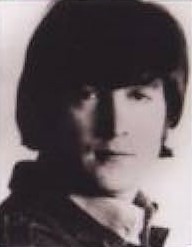 One of the biggest reasons this song works on so many levels is that we truly believe that John is in emotional pain. The song may have been “knocked out” as the theme for a movie, but the lyrics went far beyond the film’s concept and became a personal display to the world of what this cynical, sneering and happy-go-lucky guy really had going on in his head. He describes his childhood as being carefree and self-sufficient, “never needing anybody’s help in any way.” But now he relates how he’s not sure of himself even though he has, in effect, “opened up the doors” from childhood into manhood. He now finds himself ‘out of control’ in his life; in a whirlwind, so to speak, needing help to get his “feet back on the ground.” While he does appreciate the girl he’s singing to “being ‘round,” he still feels the need to cry out repeatedly “please, please help me.” One of the biggest reasons this song works on so many levels is that we truly believe that John is in emotional pain. The song may have been “knocked out” as the theme for a movie, but the lyrics went far beyond the film’s concept and became a personal display to the world of what this cynical, sneering and happy-go-lucky guy really had going on in his head. He describes his childhood as being carefree and self-sufficient, “never needing anybody’s help in any way.” But now he relates how he’s not sure of himself even though he has, in effect, “opened up the doors” from childhood into manhood. He now finds himself ‘out of control’ in his life; in a whirlwind, so to speak, needing help to get his “feet back on the ground.” While he does appreciate the girl he’s singing to “being ‘round,” he still feels the need to cry out repeatedly “please, please help me.”
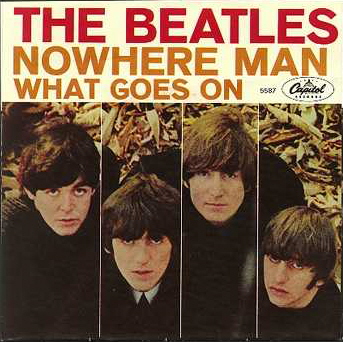 In retrospect, anyone can imagine how getting caught up in the role of being a famous Beatle might result in John expressing how his “life has changed in oh, so many ways.” But, all in all, he feels “insecure” about where he’s going and needs his girl like he’s “never done before.” Since all Lennon / McCartney songs up to this point had been about a relationship in some form or another, John still couldn’t shake himself from that concept – even in such a personally expressive song like this. A few months later, though, the mold is finally broken with “Nowhere Man,” which doesn’t even hint at love. In retrospect, anyone can imagine how getting caught up in the role of being a famous Beatle might result in John expressing how his “life has changed in oh, so many ways.” But, all in all, he feels “insecure” about where he’s going and needs his girl like he’s “never done before.” Since all Lennon / McCartney songs up to this point had been about a relationship in some form or another, John still couldn’t shake himself from that concept – even in such a personally expressive song like this. A few months later, though, the mold is finally broken with “Nowhere Man,” which doesn’t even hint at love.
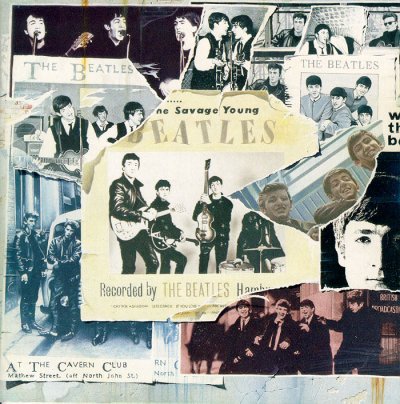 A noteworthy mention is the line “I need you like I’ve never done before,” which is an odd phrase not heard much but probably dates back to a song heard by John many years prior. The early Lennon / McCartney song “You’ll Be Mine,” which was crudely recorded in 1960 and is found on “Anthology 1,” curiously includes the line (spoken by John) “I love you like I’ve never done, like I’ve never done before.” This shows that the lyric has been in the back of John’s mind for at least five years. A noteworthy mention is the line “I need you like I’ve never done before,” which is an odd phrase not heard much but probably dates back to a song heard by John many years prior. The early Lennon / McCartney song “You’ll Be Mine,” which was crudely recorded in 1960 and is found on “Anthology 1,” curiously includes the line (spoken by John) “I love you like I’ve never done, like I’ve never done before.” This shows that the lyric has been in the back of John’s mind for at least five years.
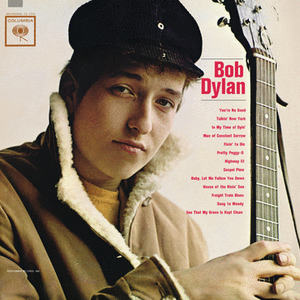 As far as musicianship, John plays the role of folk singer expressing his inner emotions (ala Bob Dylan) and does the job convincingly. Paul’s bass work is suitably performed and changes form for what is needed in each section of the song, while his counter-melody singing in the verses (done with George in unison) spices up the single-note melody lines that John wrote. As far as musicianship, John plays the role of folk singer expressing his inner emotions (ala Bob Dylan) and does the job convincingly. Paul’s bass work is suitably performed and changes form for what is needed in each section of the song, while his counter-melody singing in the verses (done with George in unison) spices up the single-note melody lines that John wrote.
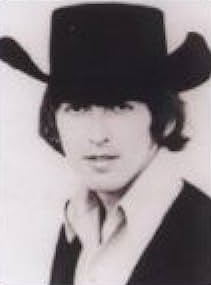 George puts in a highly crafted performance on lead guitar, overdubbing his jangly guitar phrases right in tempo. While he noticeably has to reach to hit his vocal notes in the counter-melody of the verses, his voice appears as the more prominent of the two, which shows him quite involved in this song. Ringo puts in a very steady and involved delivery, complete with dips in volume during emotive moments and swells during the high points of the song. All in all, the arrangement is tight and well rehearsed, showing The Beatles as quick to put in a commanding performance even at such a short notice. George puts in a highly crafted performance on lead guitar, overdubbing his jangly guitar phrases right in tempo. While he noticeably has to reach to hit his vocal notes in the counter-melody of the verses, his voice appears as the more prominent of the two, which shows him quite involved in this song. Ringo puts in a very steady and involved delivery, complete with dips in volume during emotive moments and swells during the high points of the song. All in all, the arrangement is tight and well rehearsed, showing The Beatles as quick to put in a commanding performance even at such a short notice.
 US Capitol single
|
American Releases
Four days before the British release, Capitol records released the new Beatles single “Help!,” with Paul’s “I’m Down” as the b-side, on July 19th, 1965. Hot on the heels of their previous number one single “Ticket To Ride,” this mono mix of “Help!” took only five weeks to make it to the top of the Billboard Hot 100, where it stayed for three weeks. This single became the band's ninth #1 single in America.
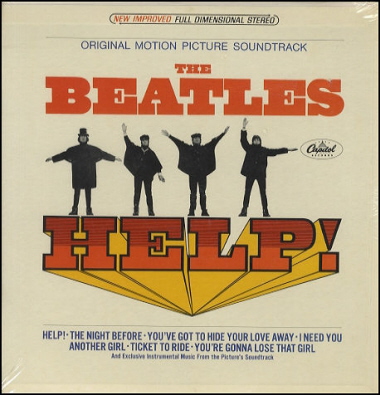 On August 13th, 1965, Capitol released its “Original Motion Picture Soundtrack” album for “Help!” which, in following the pattern set by United Artists the previous year, only included the Beatles songs that appeared in the film. Having only seven Beatles songs interspersed with five Soundtrack instrumentals prepared by Ken Thorne didn’t stop the album from racing to the #1 spot on the Billboard album chart, staying there for nine weeks, and selling over three million copies. This soundtrack album was released individually as a compact disc on January 21st, 2014, both the mono and stereo versions of the album being contained on one CD. On August 13th, 1965, Capitol released its “Original Motion Picture Soundtrack” album for “Help!” which, in following the pattern set by United Artists the previous year, only included the Beatles songs that appeared in the film. Having only seven Beatles songs interspersed with five Soundtrack instrumentals prepared by Ken Thorne didn’t stop the album from racing to the #1 spot on the Billboard album chart, staying there for nine weeks, and selling over three million copies. This soundtrack album was released individually as a compact disc on January 21st, 2014, both the mono and stereo versions of the album being contained on one CD.
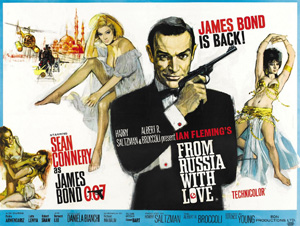 Surprisingly, there was a big difference between the version of the song on the Capitol single and what was on this album. First of all, Capitol had received the stereo mix of the song, which is markedly different in many ways (as reviewed above). Capitol chose to use the stereo mix on both the stereo and mono editions of this soundtrack album, manufacturing a “type B” mix that simply combined both channels of the stereo mix to create a new mono mix. Secondly, in the spirit of this being a soundtrack album, Capitol decided to start the album (and thereby this song) with an un-credited 15 second montage of instrumental music put together by Ken Thorne. American radio stations that chose to play the album version of the song “Help!” on the radio found it cumbersome to exclude this introduction, so they many times inadvertently played this introduction on the air. In the process, many US fans just accepted this “James Bond-like” introduction as part of the song. Surprisingly, there was a big difference between the version of the song on the Capitol single and what was on this album. First of all, Capitol had received the stereo mix of the song, which is markedly different in many ways (as reviewed above). Capitol chose to use the stereo mix on both the stereo and mono editions of this soundtrack album, manufacturing a “type B” mix that simply combined both channels of the stereo mix to create a new mono mix. Secondly, in the spirit of this being a soundtrack album, Capitol decided to start the album (and thereby this song) with an un-credited 15 second montage of instrumental music put together by Ken Thorne. American radio stations that chose to play the album version of the song “Help!” on the radio found it cumbersome to exclude this introduction, so they many times inadvertently played this introduction on the air. In the process, many US fans just accepted this “James Bond-like” introduction as part of the song.
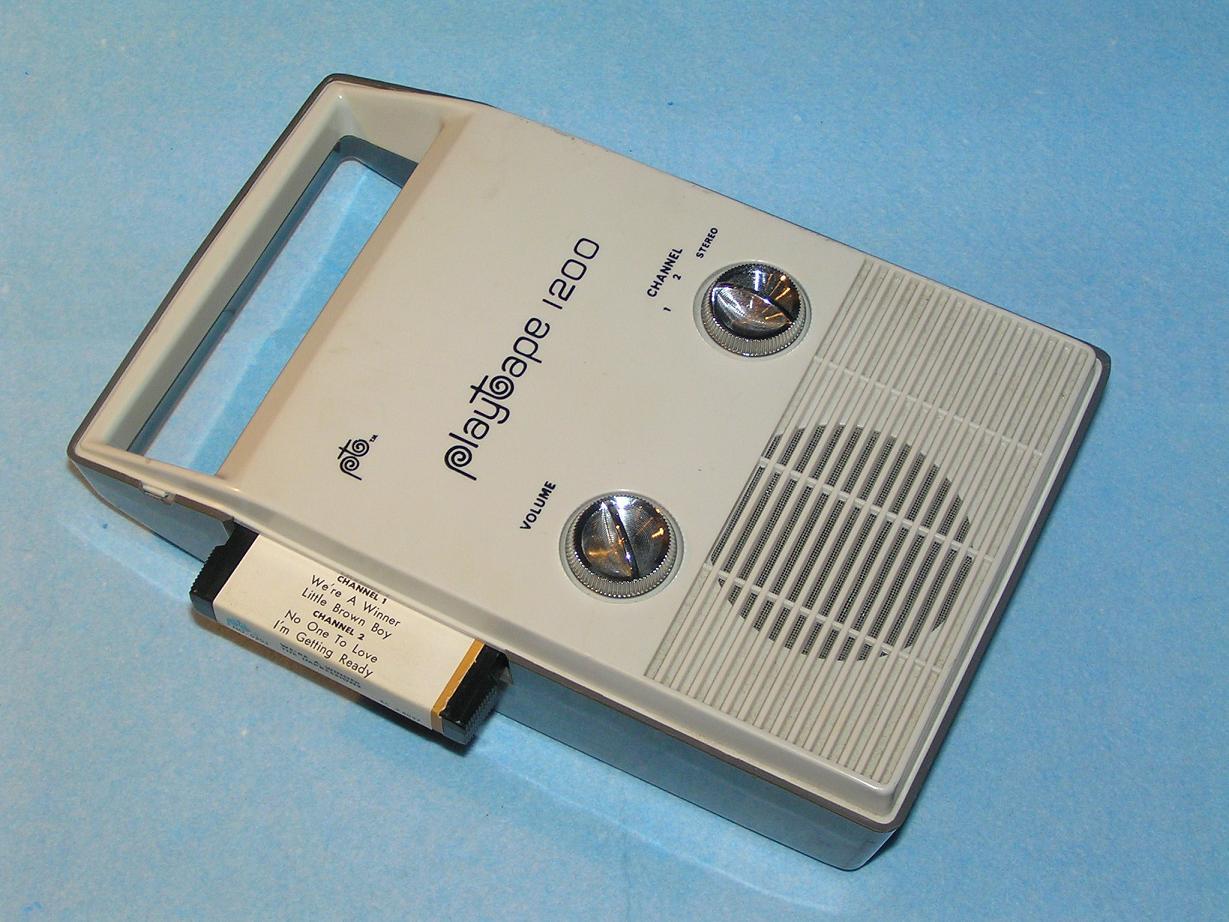 Sometime in 1967, Capitol released Beatles music on a brand new but short-lived format called "Playtapes." These tape cartridges did not have the capability to include entire albums, so two truncated four-song versions of the "Help!" Soundtrack were released in this portable format, the title song "Help!" being on both of these releases. These "Playtapes" are highly collectable today. Sometime in 1967, Capitol released Beatles music on a brand new but short-lived format called "Playtapes." These tape cartridges did not have the capability to include entire albums, so two truncated four-song versions of the "Help!" Soundtrack were released in this portable format, the title song "Help!" being on both of these releases. These "Playtapes" are highly collectable today.
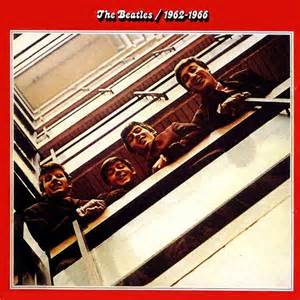 Common misconception regarding the introduction was accentuated with the song's next release on April 19th, 1973. “The Beatles/1962-1966,” affectionately known as “The Red Album,” was one of two double-album compilations that were released simultaneously. Side three of this set started off with “Help!” from the mix prepared for the soundtrack album, which contained the introductory “James Bond” theme. Since Britain prepared their own version of the album for release in that country, the introduction is not included and, therefore, was never released in Britain at all. When this compilation album was finally released on compact disc in September of 1993, the "James Bond" introduction was finally dropped, this version of "Help!" also appearing on the composite "Red Album / Blue Album" promotional sampler that came out simultaneously. A remastered version of the "Red Album" was then released on August 10th, 2010. Common misconception regarding the introduction was accentuated with the song's next release on April 19th, 1973. “The Beatles/1962-1966,” affectionately known as “The Red Album,” was one of two double-album compilations that were released simultaneously. Side three of this set started off with “Help!” from the mix prepared for the soundtrack album, which contained the introductory “James Bond” theme. Since Britain prepared their own version of the album for release in that country, the introduction is not included and, therefore, was never released in Britain at all. When this compilation album was finally released on compact disc in September of 1993, the "James Bond" introduction was finally dropped, this version of "Help!" also appearing on the composite "Red Album / Blue Album" promotional sampler that came out simultaneously. A remastered version of the "Red Album" was then released on August 10th, 2010.
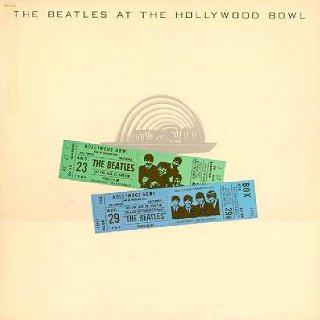 May 4th, 1977 saw the next release of the song on the album “The Beatles At The Hollywood Bowl.” This version was recorded August 29th, 1965, which was the first of their two performances that year. John introduces the song live by calling it “our latest record over here…I mean, the new single." This album was eventually remastered by Giles Martin and re-released under the new title "Live At The Hollywood Bowl" on September 9th, 2016. May 4th, 1977 saw the next release of the song on the album “The Beatles At The Hollywood Bowl.” This version was recorded August 29th, 1965, which was the first of their two performances that year. John introduces the song live by calling it “our latest record over here…I mean, the new single." This album was eventually remastered by Giles Martin and re-released under the new title "Live At The Hollywood Bowl" on September 9th, 2016.
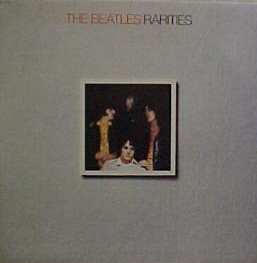 When Capitol was putting together an American version of the British “Rarities” album, they were quick to note the dissimilarities between the mono and stereo versions of the song “Help!” Since the 1965 single was the only time this was available in the US and was never on any album up to this point, it was a true “rarity” as far as America was concerned. Therefore, this March 24th, 1980 released album contained the long-sought after mono version. When Capitol was putting together an American version of the British “Rarities” album, they were quick to note the dissimilarities between the mono and stereo versions of the song “Help!” Since the 1965 single was the only time this was available in the US and was never on any album up to this point, it was a true “rarity” as far as America was concerned. Therefore, this March 24th, 1980 released album contained the long-sought after mono version.
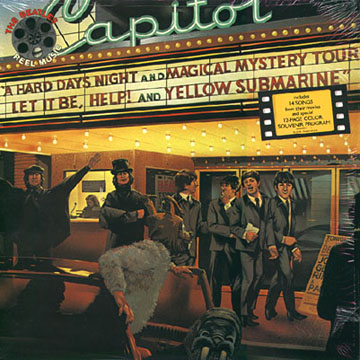 With the re-release of the “A Hard Day’s Night” movie in theaters, Capitol decided to “capitalize” on the event by putting together an album of songs from all of The Beatles' films. The album, which they titled “Reel Music,” was released on March 22nd, 1982, and ended up peaking at #19 on the Billboard album chart. Over 12,000 promotional copies of this album were also printed, all of these being on translucent gold vinyl. Predictably, it featured the title song of their second motion picture “Help!” With the re-release of the “A Hard Day’s Night” movie in theaters, Capitol decided to “capitalize” on the event by putting together an album of songs from all of The Beatles' films. The album, which they titled “Reel Music,” was released on March 22nd, 1982, and ended up peaking at #19 on the Billboard album chart. Over 12,000 promotional copies of this album were also printed, all of these being on translucent gold vinyl. Predictably, it featured the title song of their second motion picture “Help!”
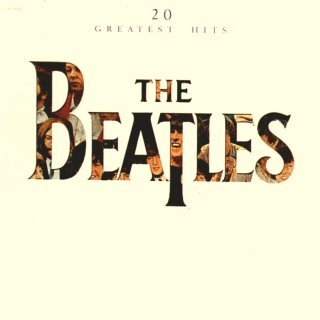 Later in the year, to coincide with the 20th anniversary of the release of The Beatles first British single “Love Me Do,” Capitol put together a further compilation album simply titled “20 Greatest Hits.” The album was released on October 11th, 1982 but only managed to make it as high as #50 on the US Billboard album chart. Since all twenty of these songs peaked at #1 on the Billboard Hot 100 when they were originally released, “Help!” obviously made the cut. Later in the year, to coincide with the 20th anniversary of the release of The Beatles first British single “Love Me Do,” Capitol put together a further compilation album simply titled “20 Greatest Hits.” The album was released on October 11th, 1982 but only managed to make it as high as #50 on the US Billboard album chart. Since all twenty of these songs peaked at #1 on the Billboard Hot 100 when they were originally released, “Help!” obviously made the cut.
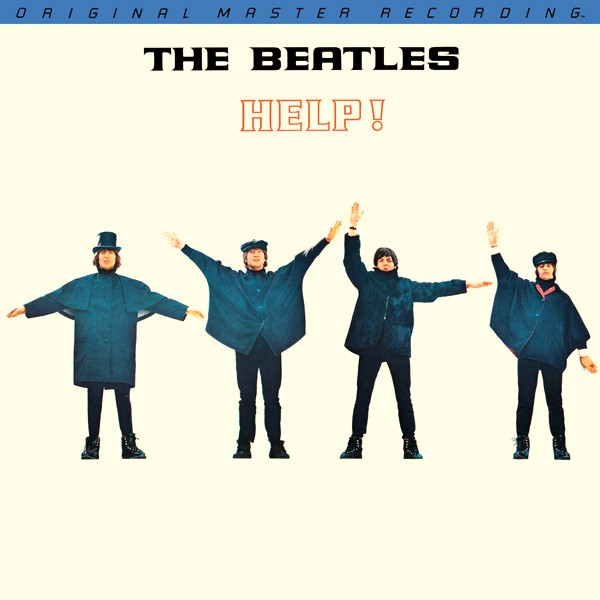 The first time the original British "Help!" album was made available in the US was the "Original Master Recording" vinyl edition released through Mobile Fidelity Sound Lab in January of 1986. This album was prepared utilizing half-speed mastering technology from the original master tape on loan from EMI. This version of the album was only available for a short time and is quite collectible today. The first time the original British "Help!" album was made available in the US was the "Original Master Recording" vinyl edition released through Mobile Fidelity Sound Lab in January of 1986. This album was prepared utilizing half-speed mastering technology from the original master tape on loan from EMI. This version of the album was only available for a short time and is quite collectible today.
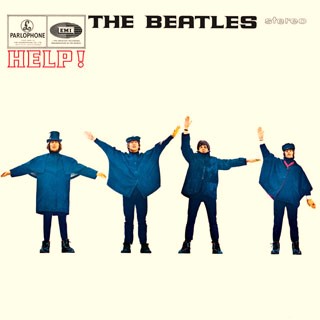 On April 30th, 1987, the compact disc era brought an updated stereo mix of the entire British “Help!” album to the American market, a vinyl edition being released on July 21st, 1987. This George Martin manufactured new mix was also used when the remastered version of the CD hit the market on September 9th, 2009, this also being released on vinyl on November 13th, 2012. On April 30th, 1987, the compact disc era brought an updated stereo mix of the entire British “Help!” album to the American market, a vinyl edition being released on July 21st, 1987. This George Martin manufactured new mix was also used when the remastered version of the CD hit the market on September 9th, 2009, this also being released on vinyl on November 13th, 2012.
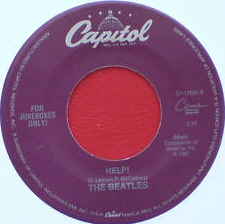 Even though the compact disc format had taken hold, jukeboxes across the nation still played 45s. This dilemma was rectified by Capitol instituting their Cema series of “For Jukeboxes Only!” singles, which were mostly printed on colored vinyl. The “Help!” single, which was released in February of 1992, appeared on white vinyl with “I’m Down” still on the b-side. Even though the compact disc format had taken hold, jukeboxes across the nation still played 45s. This dilemma was rectified by Capitol instituting their Cema series of “For Jukeboxes Only!” singles, which were mostly printed on colored vinyl. The “Help!” single, which was released in February of 1992, appeared on white vinyl with “I’m Down” still on the b-side.
The next release of the song was actually not on a Beatles album, but on the soundtrack for the documentary film “Imagine: John Lennon.” The double album (or single CD), released on October 10th, 1988, featured highlights of his career with The Beatles as well as his solo career. The album peaked at #31 on the Billboard album chart.
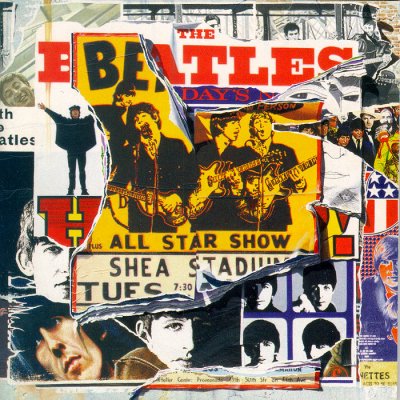 On March 18th, 1996, the highly anticipated second Anthology set, titled “Anthology 2,” appeared on the market. The version of “Help!” that appears on this album was performed live on August 1st, 1965 at the ABC Theatre in Blackpool for their television show “Blackpool Night Out.” John here introduces the song as “our latest record…or our latest electronic noise, depending on which side you’re on.” They put in a spirited performance of the song despite the fact that John flubbed the lyrics of both the second and third verses. On March 18th, 1996, the highly anticipated second Anthology set, titled “Anthology 2,” appeared on the market. The version of “Help!” that appears on this album was performed live on August 1st, 1965 at the ABC Theatre in Blackpool for their television show “Blackpool Night Out.” John here introduces the song as “our latest record…or our latest electronic noise, depending on which side you’re on.” They put in a spirited performance of the song despite the fact that John flubbed the lyrics of both the second and third verses.
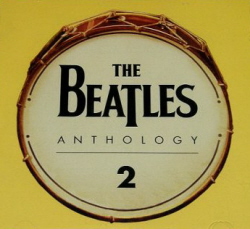 In preparation for the above release, a sampler disc was shipped to American radio stations that included the version of "Help!" as indicated above. With a limited number of copies printed, this single disc is quite rare. In preparation for the above release, a sampler disc was shipped to American radio stations that included the version of "Help!" as indicated above. With a limited number of copies printed, this single disc is quite rare.
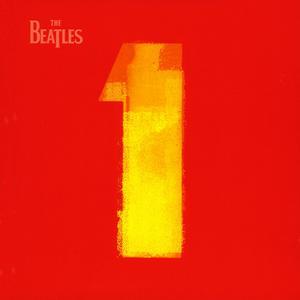 With the above mentioned “20 Greatest Hits” album long out-of-print, and in the throes of the compact disc era, the CD “Beatles 1” was released on November 13th, 2000. With “Help!” nestled in among all these chart toppers, the set couldn’t help but sell over 31 million copies worldwide and 11 million copies in the US alone as of 2017. A remastered version of this album was released in September of 2011, and a newly mixed version was released on November 6th, 2015. With the above mentioned “20 Greatest Hits” album long out-of-print, and in the throes of the compact disc era, the CD “Beatles 1” was released on November 13th, 2000. With “Help!” nestled in among all these chart toppers, the set couldn’t help but sell over 31 million copies worldwide and 11 million copies in the US alone as of 2017. A remastered version of this album was released in September of 2011, and a newly mixed version was released on November 6th, 2015.
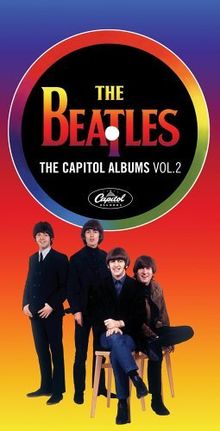 Sensing the desire to hear all of The Beatles music the way it was heard in the '60s, Capitol was more than happy to oblige. The April 11th, 2006 released “The Capitol Albums, Vol. 2” was the second box set they produced which, this time around, featured all four Beatles albums released in 1965 in the original stereo and mono formats that we heard them in back then. Therefore, the soundtrack album “Help!” was preserved in its entirety, Ken Thorne instrumentals and all. Sensing the desire to hear all of The Beatles music the way it was heard in the '60s, Capitol was more than happy to oblige. The April 11th, 2006 released “The Capitol Albums, Vol. 2” was the second box set they produced which, this time around, featured all four Beatles albums released in 1965 in the original stereo and mono formats that we heard them in back then. Therefore, the soundtrack album “Help!” was preserved in its entirety, Ken Thorne instrumentals and all.
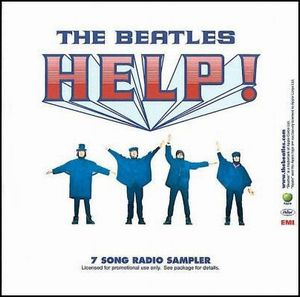 To help promote the “Help!” DVD that was released on November 6th, 2007, Capitol issued a “7 Song Radio Sampler” that featured all the tracks contained in the movie, including the title track of course. This hard-to-find promotional disc is handsomely packaged and is a nice addition to the Beatlemaniacs collection – if he can find it. To help promote the “Help!” DVD that was released on November 6th, 2007, Capitol issued a “7 Song Radio Sampler” that featured all the tracks contained in the movie, including the title track of course. This hard-to-find promotional disc is handsomely packaged and is a nice addition to the Beatlemaniacs collection – if he can find it.
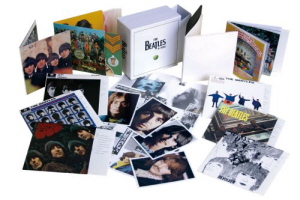 And if you still have a hankering to hear the original mono mix of the song, it’s available on compact disc within the box set “The Beatles In Mono,” which was released on CD on September 9th, 2009 and on vinyl on September 9th, 2014. Also featured here is the original 1965 stereo mix which, although substantially the same as the later stereo mix, is preserved here for posterity for Beatles purists. And if you still have a hankering to hear the original mono mix of the song, it’s available on compact disc within the box set “The Beatles In Mono,” which was released on CD on September 9th, 2009 and on vinyl on September 9th, 2014. Also featured here is the original 1965 stereo mix which, although substantially the same as the later stereo mix, is preserved here for posterity for Beatles purists.
In promotion of the 2014 box set "The US Albums," a 25-song sampler CD was manufactured for limited release on January 21st, 2014, this containing the stereo mix of "Help!"
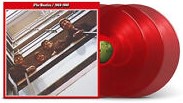 A 50th Anniversay edition of the compilation album "The Beatles / 1962 - 1966" (aka "The Red Album") was released on November 10th, 2023, the new stereo mix of "Help!" as detailed above being included. This newly expanded release included 12 additional songs for a total of 38 tracks, and was made available as a double CD and as a triple vinyl release on both black and red vinyl. A 50th Anniversay edition of the compilation album "The Beatles / 1962 - 1966" (aka "The Red Album") was released on November 10th, 2023, the new stereo mix of "Help!" as detailed above being included. This newly expanded release included 12 additional songs for a total of 38 tracks, and was made available as a double CD and as a triple vinyl release on both black and red vinyl.
Live Performances
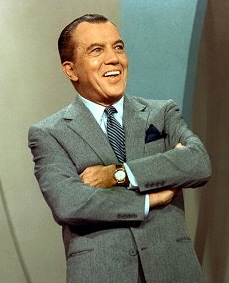 As “Help!” was their latest single as well as the title track to their second motion picture, it was a given that they would perform the song live just after the single was released. This they did but, despite the song’s immense popularity, it was limited to the latter half of 1965. As “Help!” was their latest single as well as the title track to their second motion picture, it was a given that they would perform the song live just after the single was released. This they did but, despite the song’s immense popularity, it was limited to the latter half of 1965.
Their debut performance of the song was just over a week after its being released, which was at the ABC Theatre in Blackpool on August 1st, 1965, for the live British television variety show “Blackpool Night Out.” Two weeks after this, on August 14th, 1965, they taped a nearly identical performance to be shown on the American variety show “The Ed Sullivan Show,” which aired on September 12th of that year.
The day after this segment was taped they began their second American tour, starting with the famous Shea Stadium concert in New York City on August 15th, 1965. This show was also filmed and shown on American television as “The Beatles At Shea Stadium,” but not until January 10th, 1967 (although Britain got to see it as early as March 1st, 1966). This entire tour featured the song "Help!"
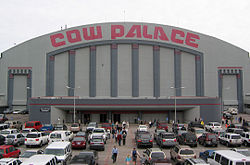 This eleven-date tour extended through August 31st, 1965, when they completed the schedule at the Cow Palace in San Francisco, California. Other noteworthy performances were the August 29th and 30th, 1965 dates at the Hollywood Bowl in Los Angeles, where they were recorded for future release as a live album in 1977. This eleven-date tour extended through August 31st, 1965, when they completed the schedule at the Cow Palace in San Francisco, California. Other noteworthy performances were the August 29th and 30th, 1965 dates at the Hollywood Bowl in Los Angeles, where they were recorded for future release as a live album in 1977.
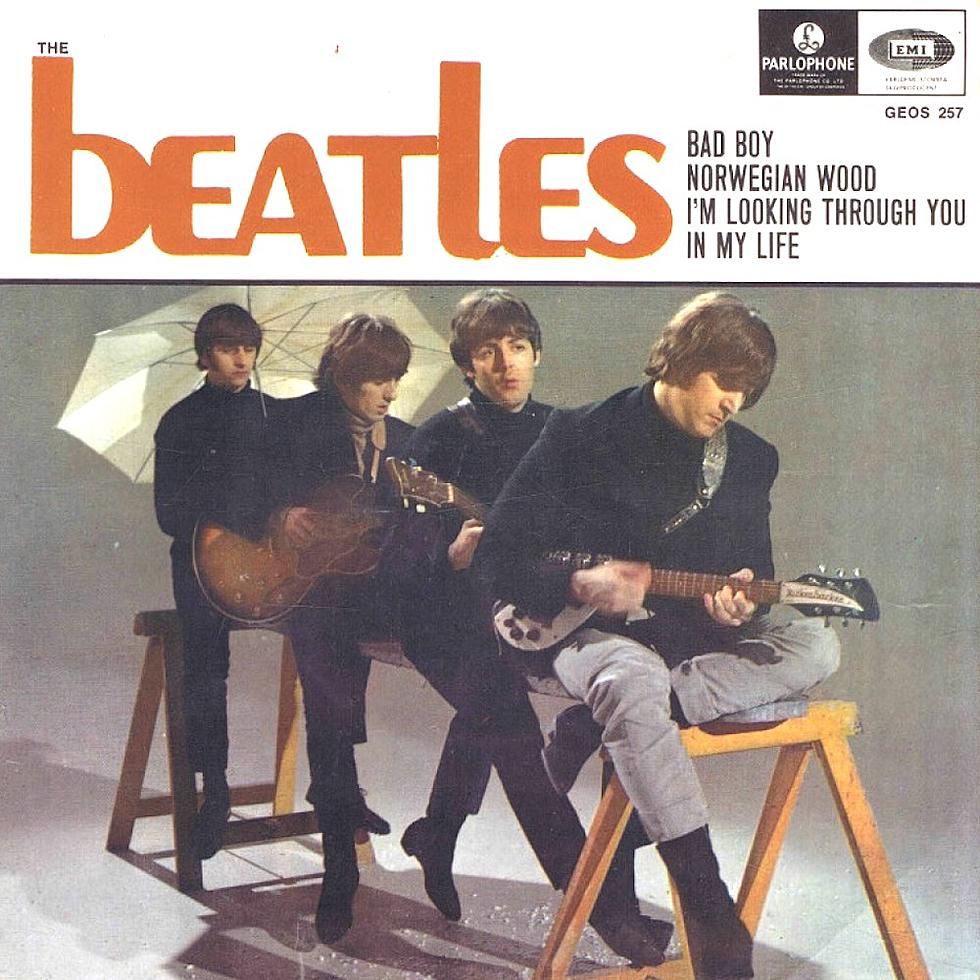 After the tour was over, their primary concern was recording their next album “Rubber Soul,” but after this was competed, they entered Twickenham Film Studios on November 23rd, 1965 to film promotional videos of many of their latest singles. The purpose of this effort was to send these clips to various television programs so they wouldn’t have to make personal appearances themselves. Of the ten videos made on this day, “Help!” was one, which featured them sitting astride a work bench swaying and bobbing side-by-side while Ringo held an umbrella as, towards the end of the film, fake snow fell from above. The British TV show “Top Of The Pops ‘65” showed the clip twice; on December 25th and 26th of that year. After the tour was over, their primary concern was recording their next album “Rubber Soul,” but after this was competed, they entered Twickenham Film Studios on November 23rd, 1965 to film promotional videos of many of their latest singles. The purpose of this effort was to send these clips to various television programs so they wouldn’t have to make personal appearances themselves. Of the ten videos made on this day, “Help!” was one, which featured them sitting astride a work bench swaying and bobbing side-by-side while Ringo held an umbrella as, towards the end of the film, fake snow fell from above. The British TV show “Top Of The Pops ‘65” showed the clip twice; on December 25th and 26th of that year.
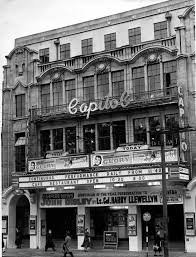 The very last British tour The Beatles ever performed began on December 3rd, 1965, and featured the song “Help!” This tour extended only until December 12th where it ended at the Capitol Cinema in Cardiff. Historically, the last performance they ever did in their hometown of Liverpool was during this tour, which happened on December 5th, 1965. The very last British tour The Beatles ever performed began on December 3rd, 1965, and featured the song “Help!” This tour extended only until December 12th where it ended at the Capitol Cinema in Cardiff. Historically, the last performance they ever did in their hometown of Liverpool was during this tour, which happened on December 5th, 1965.
As far as solo Beatle tours, Paul McCartney surprisingly included the song in a John Lennon medley during his “World Tour” of 1989 and 1990. Pairing it with “Strawberry Fields Forever” and “Give Peace A Chance,” he occasionally included it in his set list at this time.
Conclusion
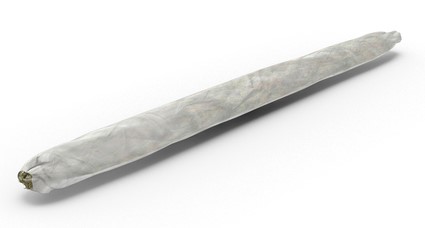 When The Beatles began work on their second motion picture, they had just written and recorded eleven new songs which had left them virtually tapped out of inspiration at the time. For the next three months their primary focus was on being movie stars. But they knew that at some point they would be asked to write and record another song – whenever the title of the movie would be decided. They also knew that, as was the case the previous year with “A Hard Day’s Night,” whatever song they would write would no doubt be their next single. Therefore, the caliber of this song had to be of the highest quality. Could they pull themselves out of their dressing rooms and their marijuana haze to be up for the task? When The Beatles began work on their second motion picture, they had just written and recorded eleven new songs which had left them virtually tapped out of inspiration at the time. For the next three months their primary focus was on being movie stars. But they knew that at some point they would be asked to write and record another song – whenever the title of the movie would be decided. They also knew that, as was the case the previous year with “A Hard Day’s Night,” whatever song they would write would no doubt be their next single. Therefore, the caliber of this song had to be of the highest quality. Could they pull themselves out of their dressing rooms and their marijuana haze to be up for the task?
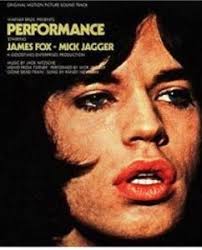 As we’ve discussed above, what they came up with the very day they were asked became one of the most, if not the single most, impressive songwriting collaborations of their career up to that point. While the sentiments expressed in the lyrics were the furthest from the usual Beatles single (“What prompted them to write such a song?” asked Mick Jagger at the time), the arrangement was pure intricate brilliance. The result was one of the most recognizable and best admired Beatles songs of their career. As we’ve discussed above, what they came up with the very day they were asked became one of the most, if not the single most, impressive songwriting collaborations of their career up to that point. While the sentiments expressed in the lyrics were the furthest from the usual Beatles single (“What prompted them to write such a song?” asked Mick Jagger at the time), the arrangement was pure intricate brilliance. The result was one of the most recognizable and best admired Beatles songs of their career.
Song Summary
“Help!”
Written by: John Lennon / Paul McCartney
-
Song Written: April 11, 1965
-
Song Recorded: April 13, 1965
-
First US Release Date: July 19, 1965
-
US Single Release: Capitol #5476
-
Highest Chart Position: #1 (3 weeks)
-
-
British Album Release: Parlophone #PCS 3071 “Help!”
-
Length: 2:16 (2:35 with “James Bond intro”)
-
Key: A major
-
Producer: George Martin
-
Engineers: Norman Smith, Ken Scott
Instrumentation (most likely):
- John Lennon - Lead Vocals, Rhythm Guitar (1964 Framus Hootenanny 5/024 acoustic 12-string)
- Paul McCartney - Bass Guitar (1963 Hofner 500/1), Backing Vocals
- George Harrison – Lead Guitar (1963 Gretsch 6119 Tennessean), Backing Vocals
- Ringo Starr – Drums (1964 Ludwig Super Classic Black Oyster Pearl), tambourine (stereo version)
Written and Compiled by Dave Rybaczewski (with thanks to Luke Pacholski for his input)
|
IF YOU WOULD LIKE TO MAKE A DONATION TO KEEP THIS WEBSITE UP AND RUNNING, PLEASE CLICK BELOW!
Sign Up Below for our MONTHLY BEATLES TRIVIA QUIZ!
|